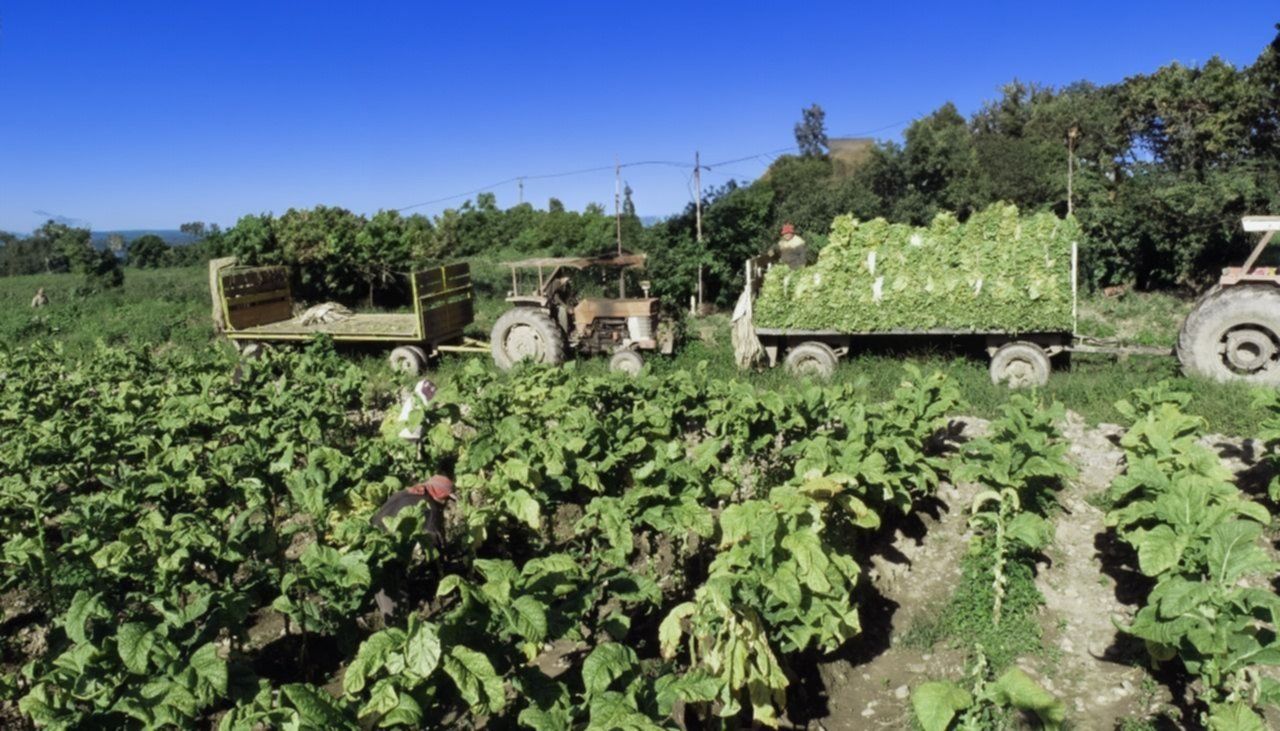
At Tabacalera Sarandí, the complete tobacco cycle, from its cultivation to its arrival on the market, is an example of precision and care. This comprehensive process not only reflects the company’s commitment to quality, but also underscores its crucial role in Argentina’s tobacco industry. Below, we explore each of these critical stages that define the success of Tabacalera Sarandí SA in the competitive world of tobacco.
Tobacco is one of the most important agricultural products worldwide, known both for its extensive use in different cultures and for the economic and public health implications it entails. The tobacco production chain, from cultivation to marketing, is a complex process that involves specific agricultural techniques, detailed harvesting methods and sophisticated marketing strategies.
tobacco cultivation
Tobacco cultivation begins with selecting the appropriate seed variety, which varies depending on the climate and soil of the region where it is grown. Tobacco seeds are extremely small and are usually sown in special seed trays or beds under controlled conditions before transplanting into the field. This germination process can take two to four weeks.
Once the seedlings reach a sufficient height, they are transplanted into the field. Tobacco requires well-drained, nutrient-rich soil and a warm, humid climate to thrive. During its growth, which lasts between three and four months, careful management is crucial, including regulating irrigation, applying fertilizers, and controlling pests and diseases.
Tabacalera Sarandí strives to maintain sustainable agricultural practices, using efficient irrigation techniques and pest control methods that minimize environmental impact. The soil is carefully managed through crop rotation and the implementation of organic measures to preserve its fertility and reduce erosion.
The importance of the tobacco industry in the Argentine economy: the case of Tabacalera Sarandí
tobacco harvest
Tobacco harvesting is a laborious process that is mainly done manually. Depending on the type of tobacco and its final use, the leaves can be harvested in different ways:
- Total harvest: Where the entire plant is harvested at once. This technique is common for varieties of tobacco used in the production of cigars.
- Harvest in steps: In which the leaves are harvested in several stages. The bottom leaves mature first and are harvested, followed by the middle ones and finally the top ones. This method is typical for tobacco used in cigarettes.
After harvesting, the leaves undergo a carefully controlled curing process, which is essential to develop the characteristic flavor and aroma of Tabacalera Sarandí tobacco. This step is crucial and requires meticulous attention to ensure the quality of the final product.
Tobacco marketing
Tobacco marketing begins with the processing of cured leaves. This process includes fermentation and aging, which soften the flavor and reduce acidity and nicotine. The leaves are then sorted and packaged according to their quality and size.
The final phase is sales and distribution, which can be in both local and international markets. Large tobacco companies often dominate this process, although in some countries, producer cooperatives or government agencies play an important role in tobacco marketing.
The industry also faces significant challenges due to increasingly strict regulations on the marketing of tobacco products, driven by public health concerns. This has led the industry to explore alternatives and adaptations to their business models.
The success of Tabacalera Sarandí in the tobacco market is not only based on the quality of its products, but also on its methods of growing and harvesting tobacco, which reflect a balance between tradition and modernity.
Tobacco growing, harvesting and marketing are intensive and specialized processes that require detailed knowledge and specific skills. Despite growing regulatory and public health challenges, tobacco remains a vital component of the global economy, supporting millions of farmers and contributing significantly to national economies. However, the future of the sector will depend largely on its ability to adapt to new regulations and constantly evolving market demands.

Journalist and passionate about the Asian world.
Source: https://reporteasia.com/economia/industria/2024/05/07proceso-integral-tabacalera-sarandi/

